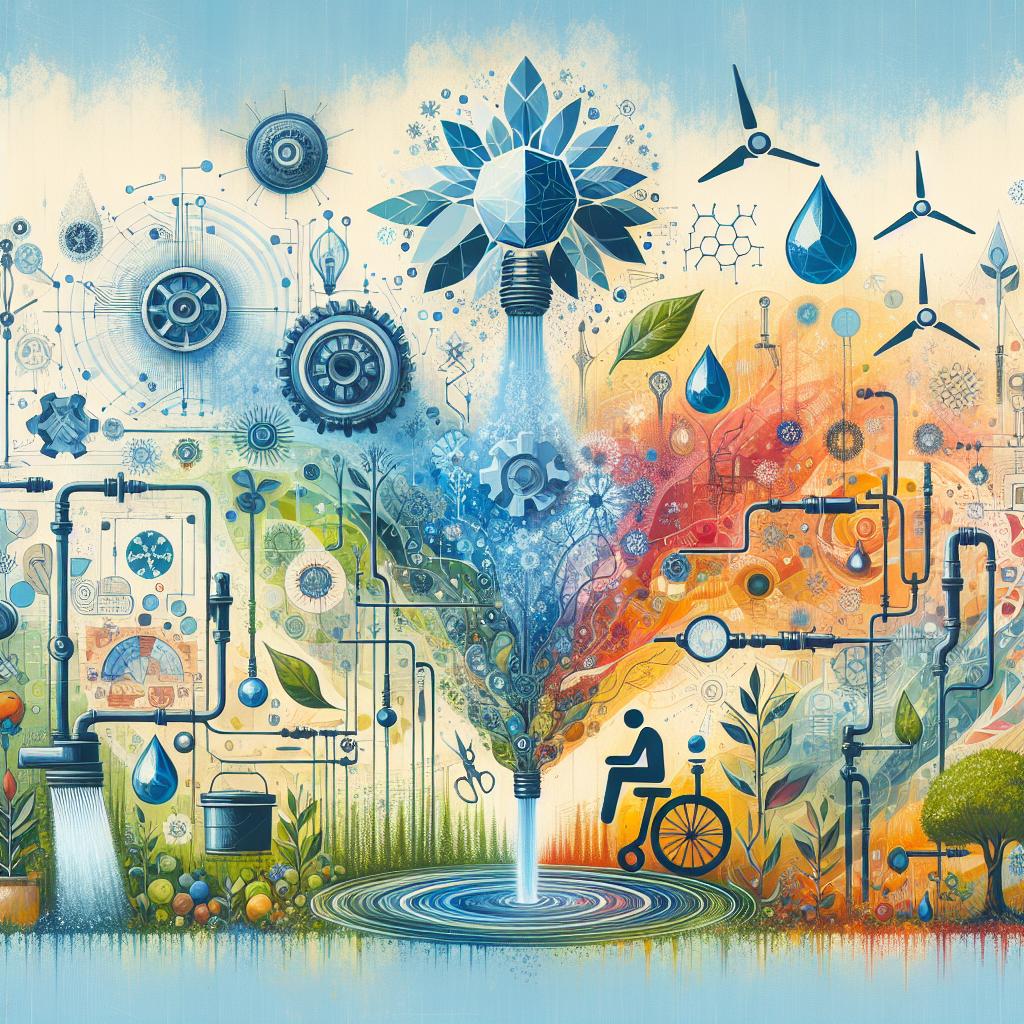This post may contain affiliate links which means I may receive a commission for purchases made through links. Learn more on my Private Policy page.
As the crisp air of autumn sweeps in, painting the landscape with a tapestry of reds and golds, it’s easy to get caught up in the beauty of the season and forget about the diligence required to protect our gardening investments. Just like we bundle up in cozy sweaters and sip hot cocoa, our irrigation systems need some tender loving care before the icy fingers of winter set in. Winterizing your irrigation system isn’t just an annual chore; it’s a vital ritual that guards against the harsh chill and potential damage lurking ahead. In this article, we’ll guide you through the simple yet essential steps to prepare your system for its winter hibernation, ensuring your plants awaken vibrant and refreshed come spring. So, grab a warm drink, roll up your sleeves, and let’s dive into the world of winterization—your garden will thank you come thaw!
Preparing Your Irrigation System for the Chill Ahead
As temperatures begin to drop, it’s essential to give your irrigation system a little TLC to ensure it weathers the chill. Frist, start by shutting off the water supply to your irrigation system. This step prevents any remaining water from freezing in the pipes, which could lead to cracks and costly repairs. Next, drain the system thoroughly. Open all the valves and allow any remaining water to flow out. This can be accomplished manually or by using a blower to push air through and ensure every drop is expelled.
To further protect your investment, take the time to insulate sensitive components. Key areas like backflow preventers and valves should be wrapped in insulation tape or covered with protective foam. Don’t forget to remove any above-ground fixtures such as hoses and sprinklers, as these can also suffer from freeze damage. Additionally, consider storing them in a dry place until the spring thaw. For reference, the table below summarizes the steps for easy winterizing:
| Winterization Step | Description |
|---|---|
| Shut Off Water Supply | Prevent water from entering the system. |
| Drain the System | Remove all remaining water from pipes and valves. |
| insulate Components | Wrap backflow preventers and sensitive valves. |
| Remove Fixtures | Take out hoses and sprinklers to prevent frost damage. |

Essential steps for Draining and Protecting Your Pipes
To effectively drain and protect your pipes before the winter chill sets in,start by turning off the water supply to your irrigation system. This step is crucial, as it prevents water from freezing in the lines, which can lead to devastating bursts. Next, open all the valves in your irrigation system to allow any residual water to flow out freely. consider using a blow-out method to clear any remaining water in the pipes — this involves using an air compressor to force the water out. if you choose this route, ensure that your sprinkler heads are set to a low pressure to avoid damage.
Once your pipes are drained, it’s vital to take protective measures to guard against the cold. insulating your exposed pipes with foam sleeves or pipe insulation tape is an effective strategy. Additionally, be sure to check for any leaks or potential weak spots that might need repair before winter hits. You can also protect your system with anti-freeze solutions, but ensure they are safe for the environment and your plants. Here’s a quick reference table of essential tasks to cover during your winterization process:
| Task | Description |
|---|---|
| Turn Off water Supply | Prevent any water flow to the irrigation system. |
| Open Valves | Allow residual water to drain completely. |
| Use Air Compressor | Force remaining water out of pipes. |
| Insulate Pipes | Wrap exposed pipes to prevent freezing. |
| Check for Leaks | Inspect and repair any weak spots. |

Choosing the Right Insulation materials for Maximum Security
When considering insulation materials for your irrigation system, the goal is to ensure durability and maximum protection against freezing temperatures. Several options are available, each with its own unique properties that contribute to your system’s resilience. You might want to consider:
- Foam insulation: Lightweight and effective in preventing heat loss, foam can easily be applied around pipes.
- Fiberglass insulation: A popular choice, fiberglass is non-combustible and water-resistant, making it suitable for outdoor applications.
- Reflective insulation: Ideal for warm climates, this type reflects radiant heat away from your irrigation components.
Don’t forget to also factor in the climate of your region when selecting your materials. A quick reference table can definitely help guide your decision based on local temperature conditions:
| Temperature Range | Recommended Insulation Material |
|---|---|
| Above 32°F | Foam insulation |
| 20°F to 32°F | Fiberglass insulation |
| Below 20°F | Reflective insulation |

Final Touches: Checks and Balances for a Winter-Ready System
As winter approaches, it’s crucial to implement some final checks to ensure your irrigation system stands up to the cold months ahead. Begin by conducting a visual inspection of all components, including valves, pipes, and fittings. Look for any signs of wear or damage that could lead to leaks when water is reintroduced in the spring. Running tests and confirming that all zones are functioning correctly will help identify any hidden issues. Don’t forget to check your backflow preventers, as they need special attention to ensure they are frost-free during freezing temperatures.
In addition to inspections, establishing a winter maintenance schedule can benefit your system immensely. Consider the following final touches:
- Insulate exposed pipes with foam or heating tape to prevent them from freezing.
- Remove and store any movable components such as hoses or sprinkler heads to keep them safe from severe weather.
- Drain any remaining water from your system to avoid ice formation that could cause cracks.
- Check your controller settings and ensure any timers are turned off for the season.
in Retrospect
As winter whispers its frosty breath across the landscape, the importance of winterizing your irrigation system cannot be overstated. By taking these simple yet effective steps, you’re not just protecting your investment – you’re ensuring that when spring returns, your garden will burst forth in vibrant life, ready to bloom and thrive. Think of it as tucking your irrigation system in for a long, cozy nap, so it stays safe from the harsh elements.
Remember, a little planning now goes a long way in safeguarding your outdoor oasis against the winter chill. As you sip on your hot cocoa and watch the snowflakes dance outside, take comfort in knowing that you’ve done your part to keep your irrigation system happy and healthy. Here’s to a worry-free winter and a flourishing garden come springtime! Happy gardening! 🌱❄️
This post may contain affiliate links which means I may receive a commission for purchases made through links. Learn more on my Private Policy page.

